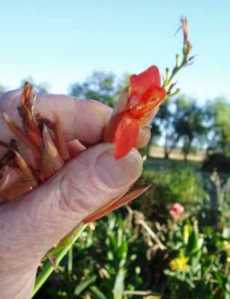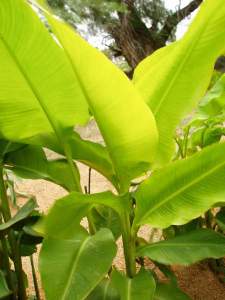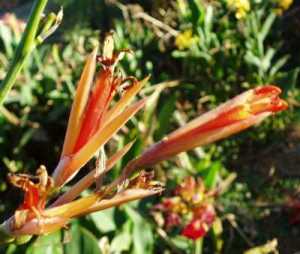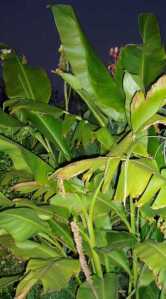After a mild winter, some of the cannas just sat still and waited for rain and warmer weather. Some did not die back with the two or three light frosts we experienced. Temperatures did not fall below 2C.
The “Bendigo Banana” was looking rather ratty in early Spring and I did not expect the stems sitting there so miserably would carry on and complete their lifecycle. After waiting five years for this mystery Canna to flower, I had given up.
 You might recall that this is the Canna that does not have rhizomes. Instead, it has a swelling at the base of the stem from which new stems sprout.
You might recall that this is the Canna that does not have rhizomes. Instead, it has a swelling at the base of the stem from which new stems sprout.
Wandering the Canna stockbeds bemoaning the prolific growth of weeds, I saw a miserably skinny flower spike waving in the breeze. The blooms were almost finished. I scrambled for my camera and here is the result:
The bloom strongly resembles Canna tuerckheimii, but is scarlet red whereas photos I have of C. tuerckheimii taken in the wild, show a more orange tone to the flowers. Here’s a closeup of one flower. My fat thumb will give some idea of scale.
The final pic shows the “Bendigo Banana” in late Autumn, looking tattered and torn and very Musa-like. Hence the nickname.
The question of this canna’s identity still remains. There is no mention in any literature about C. tuerckheimii having an absence of rhizomes. Then also, the flower colour is red and not orange. Is this a geographical subspecie of C. tuerckheimii?




